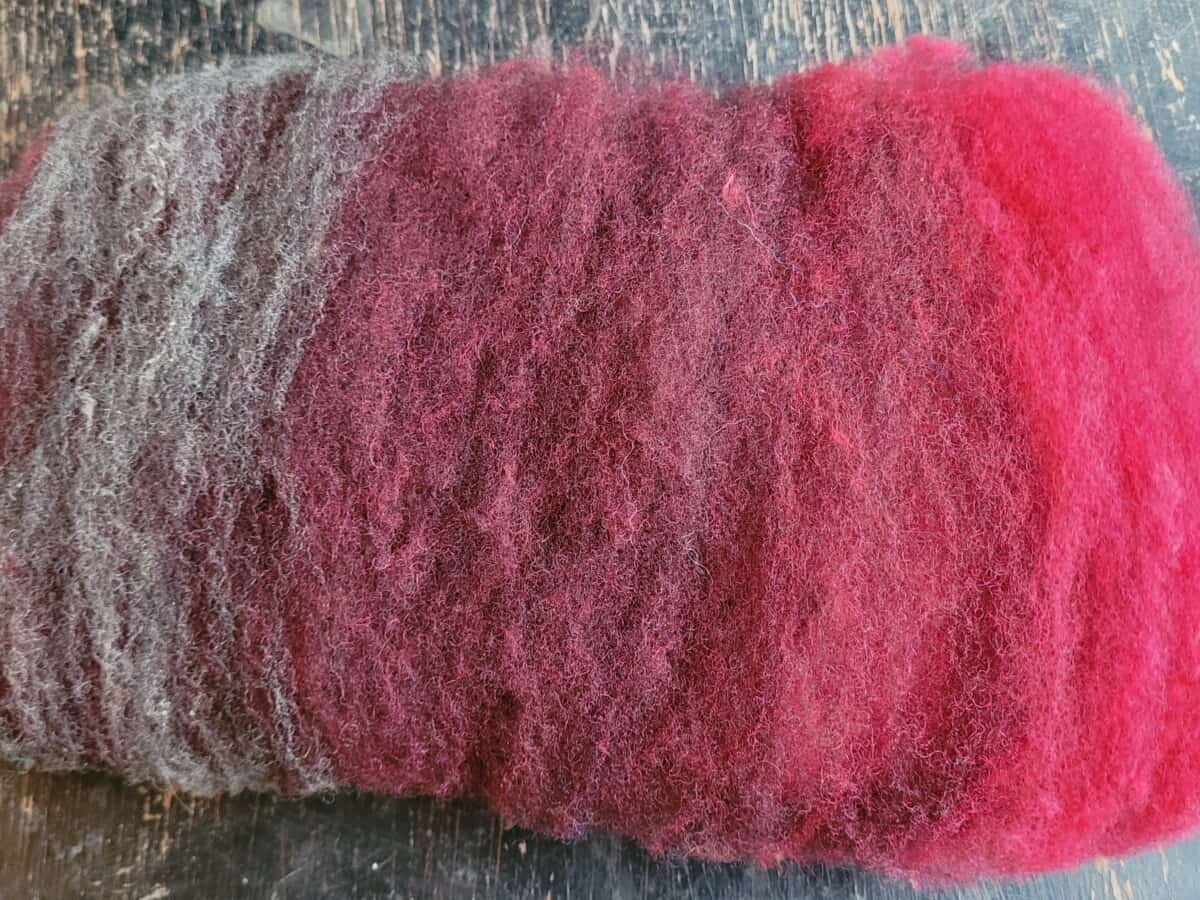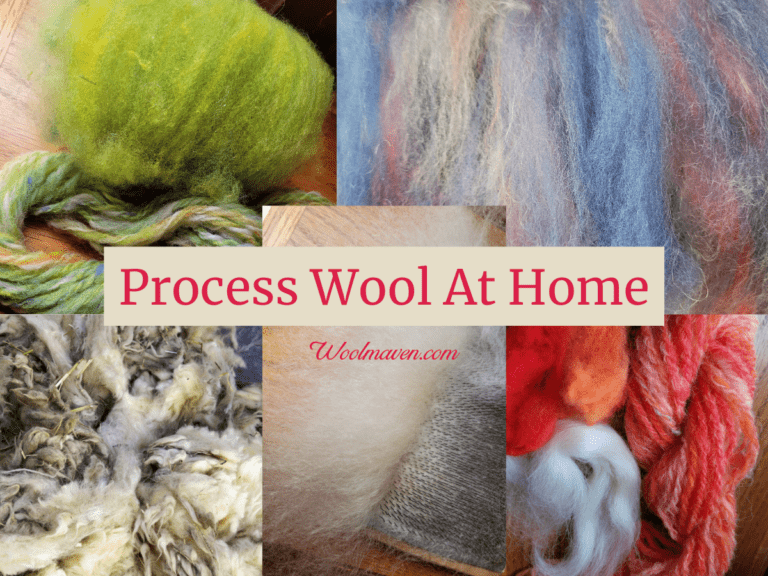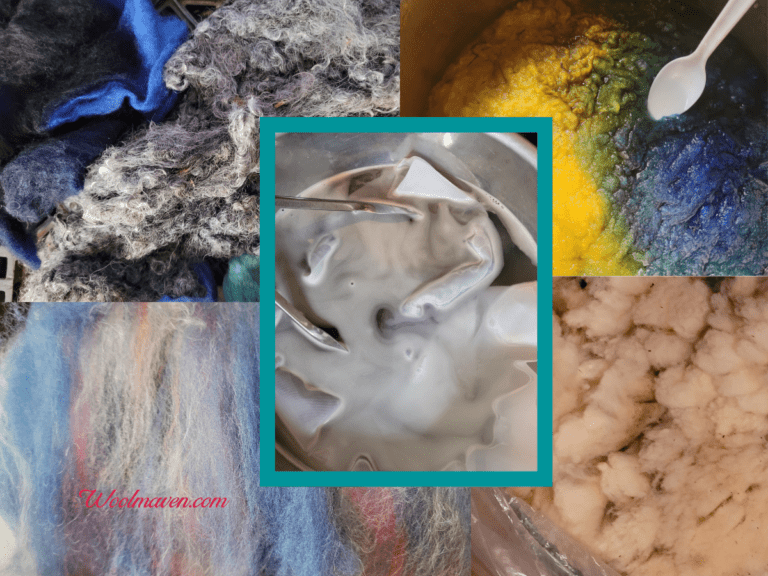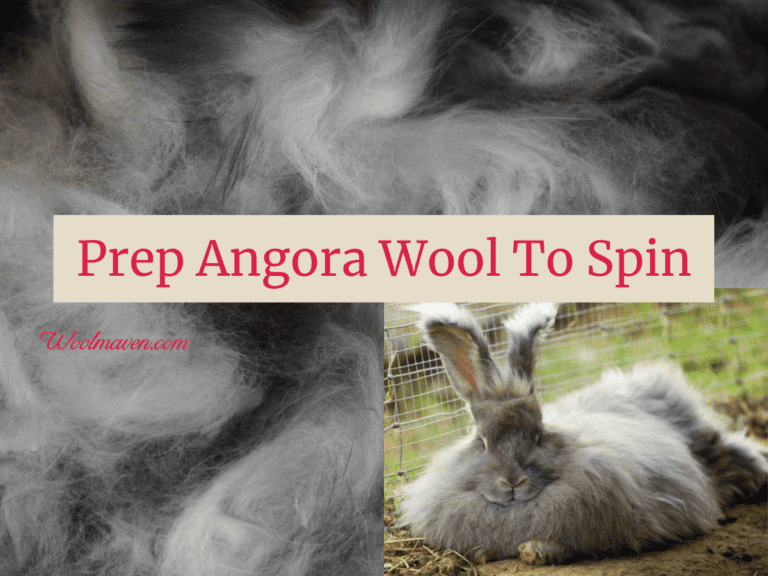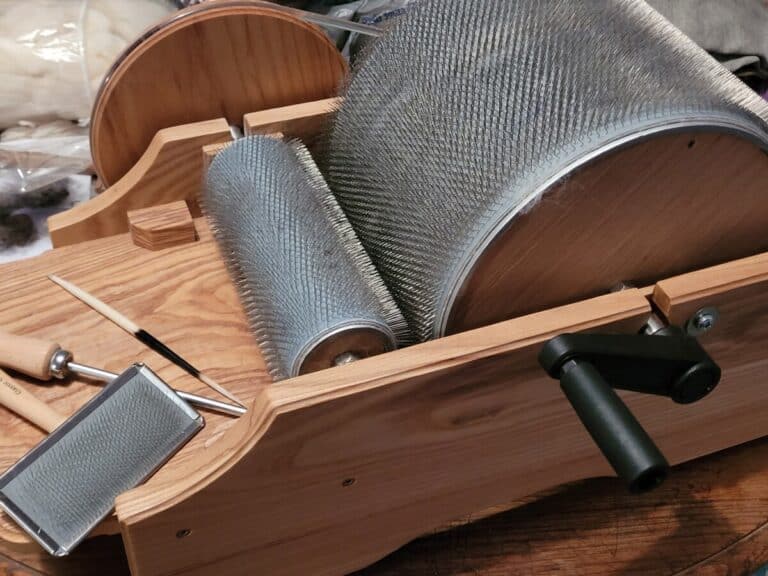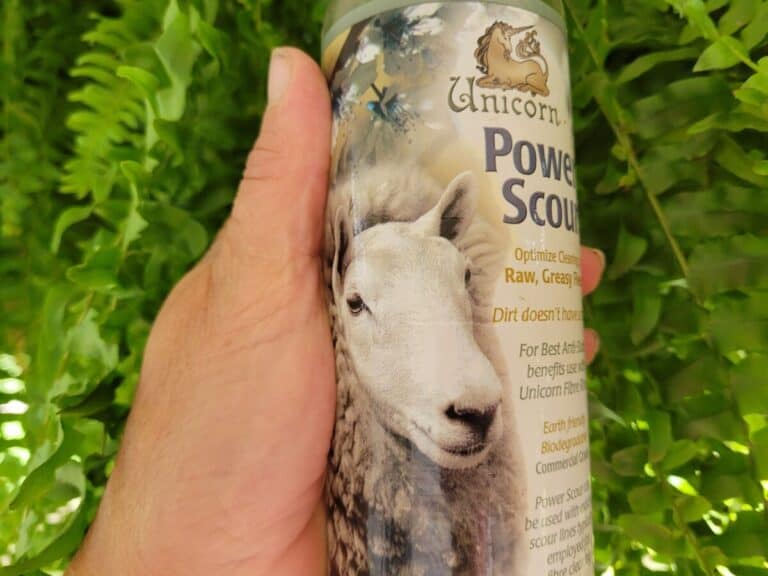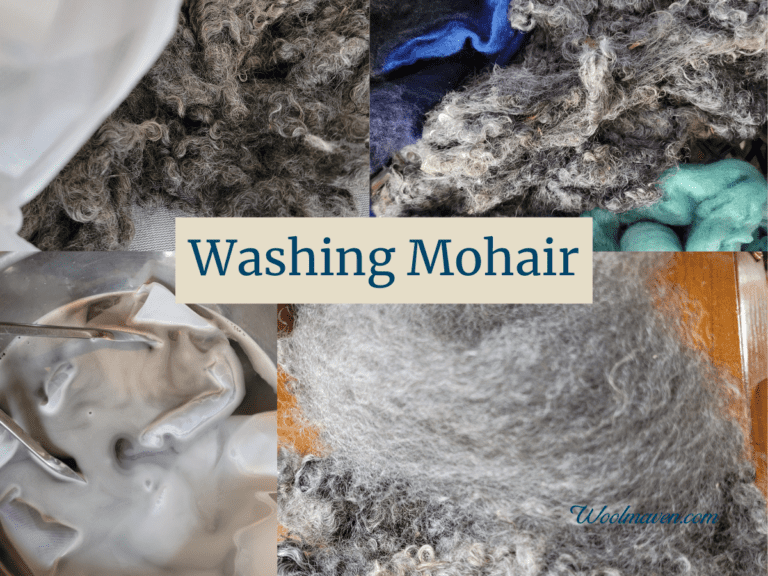How To Prepare Wool For Handspinning
The goal of easy to work with fibers are pretty much the same, no matter what wool you start with, but it’s how you get there from where you start that makes the difference!
Are you working with raw or washed fleece or maybe you are starting with ready to use commercially prepared fiber like combed top? No worries, read on and we’ll get you there.
What wools do I recommend for all beginning spinners? That’s easy! There are four standouts that are great for beginners and generally easy to find! Click here to get the list!
Are you working with washed or raw fleece?
Are you going to be working with washed or raw fleece for your handspinning project? Both can be done, but take a bit of a different approach.
If you try working with raw fleece and find that it’s just not working, you can always decide to wash the wool and carry on with the washed instructions.
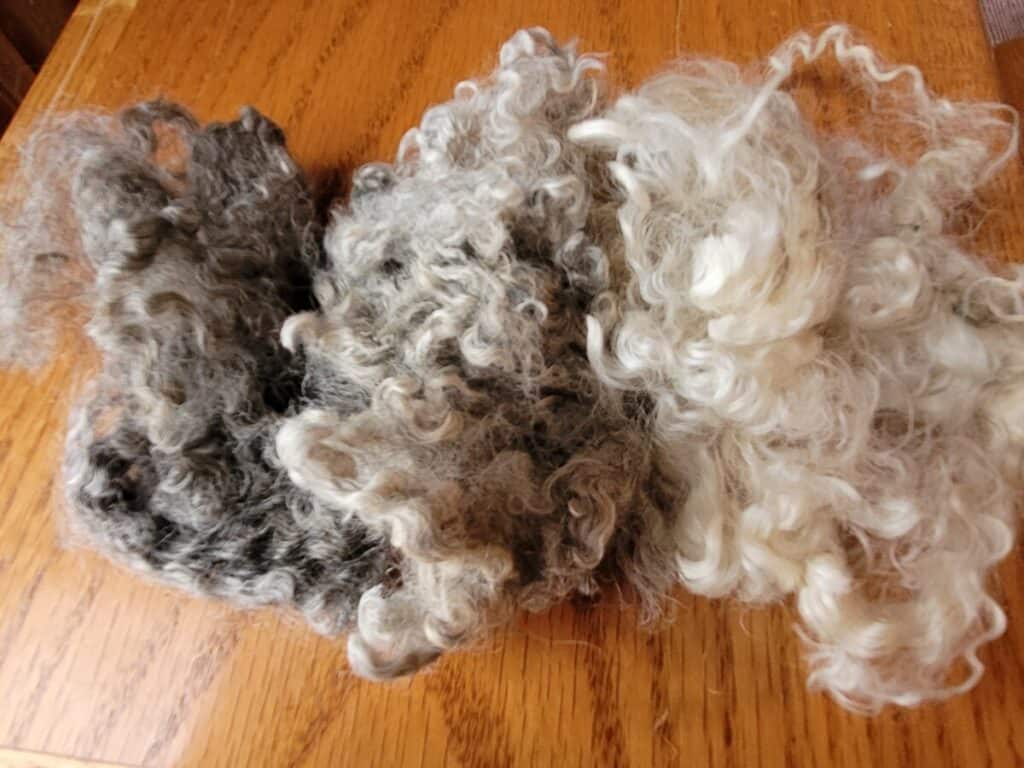
Working with raw fleece
Raw fleece means the fleece is not washed at all, it’s just like it came off of the sheep. You’ll have lanolin and some other debris, which may be workable or not, depending upon you.
I like to work with raw fleece when I can, but not all fleeces work well raw. How do you know?
You can test it out for yourself, or read Using Raw Fleece to see if the fleece you have meets these criteria.
Skirt the fleece
First off, you’ll want to skirt the fleece. Basically, you’ll want to get out any debris that you find and pull out any sections that are not top grade, like second cuts or overly dirty sections.
If it’s worth it to you, the dirty sections can be washed, of course! If what you are seeing is actually stains, those are not likely to wash out.
Stained wool can still be used in a later project, but keep it separate for now.
I pulled out some stained sections of a kid mohair fleece I bought and used them for dyed highlights to some blending work. They add a bit of luster to an other wise too tame batt.
Section off similar feeling section to work with
Also, section off the fleece so that you are working with wool that is all as similar as possible.
You don’t want to add in any hairy parts or rougher areas of the fleece which will add harshness and crunch where you may not want it.
This is not as crazy as it sounds, many breeds or crosses have unusual sections or characteristics to a part of the fleece that you may not want added into the entire rest of your fiber supply.
I have worked with a Jacob fleece that has a different feel to the colors, the darker sections are completely different to work with than the lighter sections.
Sometimes I like to put these two sections together, it makes a nice naturally striped yarn, but normally I keep them separate.
If your fleece is heavily skirted and of a breed that has been well selected for uniform fleece condition and quality, pulling out sections of odd bits are less of a big deal.
However, if you are working with a less well developed breed, keeping similar parts of the fleece together becomes fairly important to getting a consistent yarn.
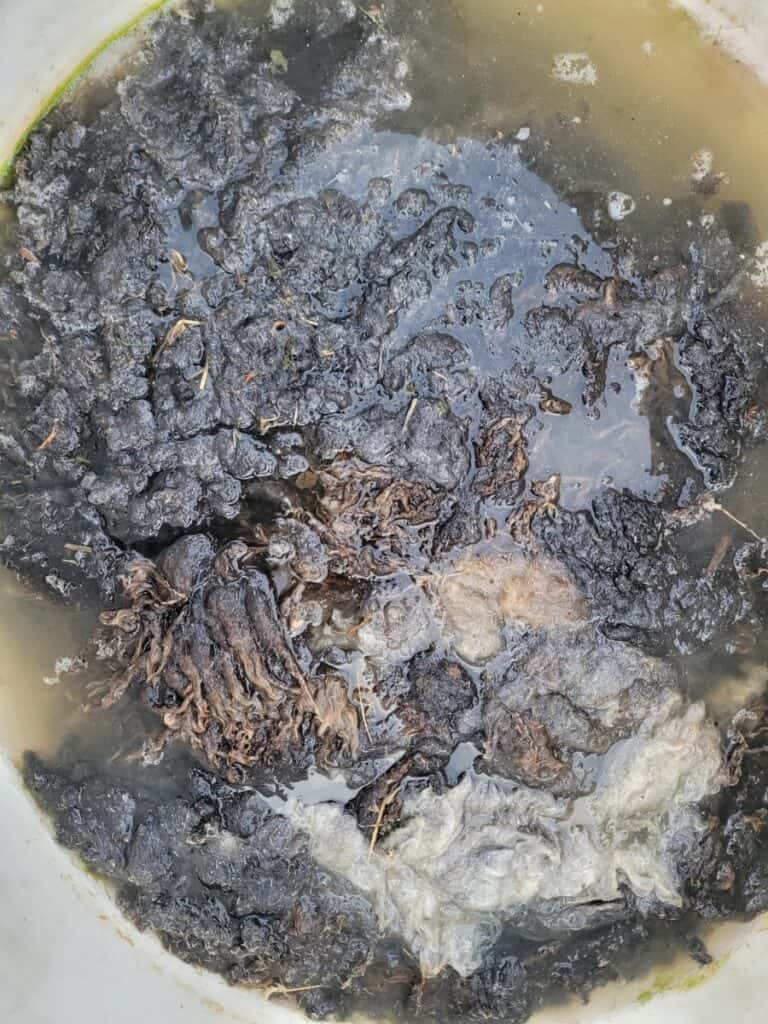
You can suint soak the wool
You need to decide if you want to suint soak the wool, which is not really a wash, but will loosen up any dirt and sweat that are on the fleece, leaving only lanolin.
If you are interested in doing a suint soak, click for complete instructions. It’s not hard, but it does take overnight, plus drying time.
This post contains affiliate links, which means I receive commissions if you choose to purchase through links I provide (at no extra cost to you).
Carding raw wool
If you are going to work with the fleece, as is, you can just card it, unwashed. What this will do is put any lanolin or other contaminants on the cards, which is fine unless it bothers you.
The downside of using your cards for unwashed wool is that you really don’t have a clean set for carding washed wool.
To fix this, some folks have two sets of cards, other folks just don’t worry about it.
The hand cards that I use are Clemes & Clemes Curved Back Wool Cards. I’ve had them for almost 20 years and use them for all of my hand carding.
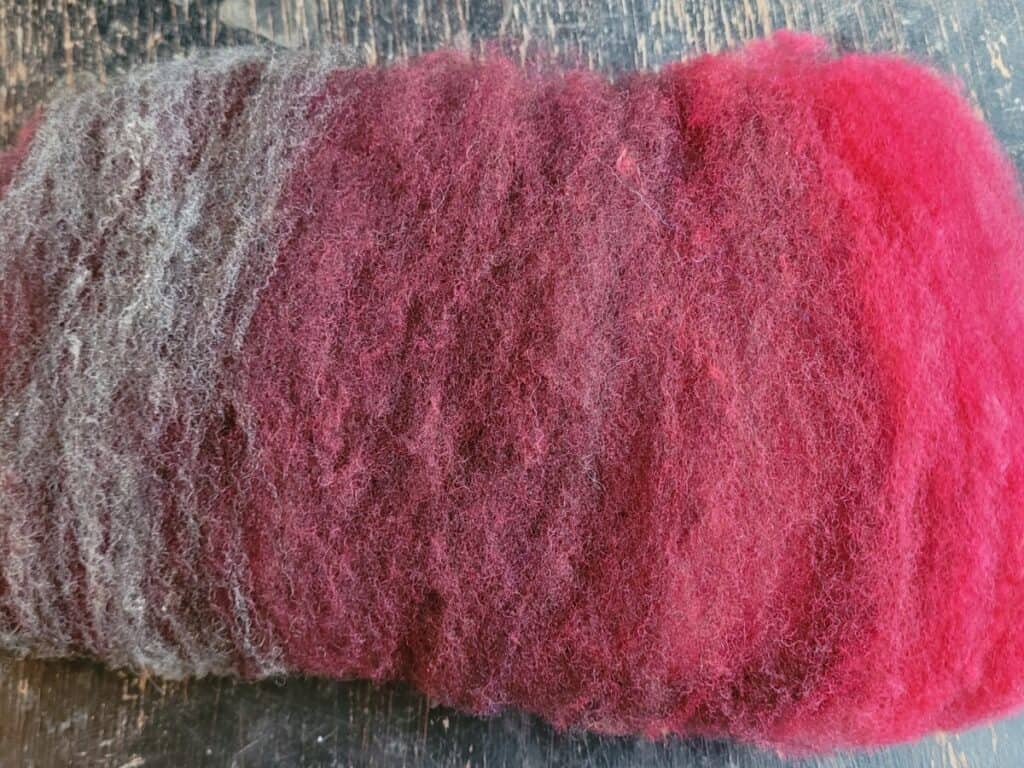
Combing raw wool
If you have a more combing length fleece and want to use it raw, as long as you are happy with getting the combs a bit dirty, that’s fine.
I would caution you to do a bit of a test batch and see how it goes first, since the lanolin will make the wool difficult and tacky to comb through without washing first.
This wool comb set looks the most beginner friendly to me, and, as a bonus, they come with a holder. I purchased a different set, which are fine, but if I had it to do over again, I’d get these instead.
Working with washed fleece
First off, let me say that if you feel the fleece is washed well enough for you, good. If not, give it another wash.
A wash that cleans up a fleece that started out fairly clean will not be adequate for a fleece that starts out dirty or really high in lanolin.
If you are working with washed fleece, be sure you have fiber all coming from the same section of the fleece, so you don’t feel or see small differences in the fiber.
Make sure that you card or comb enough for the entire batch of yarn that you plan to make.
It’s much easier to keep the yarn consistent when you are working with an evenly mixed fiber supply to begin with.
The other consideration for washed fleeces is do you need to dye it? I find that it is much easier to dye before carding rather than after.
Of course, you can dye carded wool, you’ll just end up re carding it so you are doubling up on work, but it is doable.
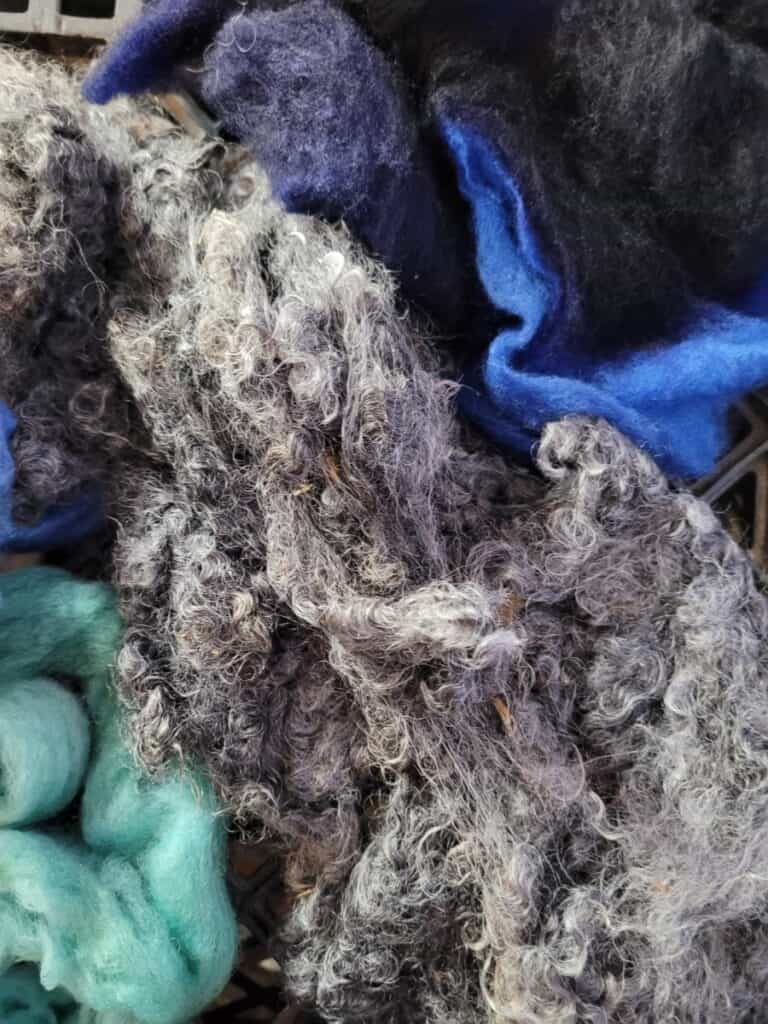
Working with ready to spin fiber
If you purchased ready to spin fiber, you still have a few options to consider before you sit down to your wheel.
What fibers are best for beginners? Click here to sign up for a list showing you exactly what wools to buy to making your spinning easier!
Do you want to dye it? Or maybe you want to blend fibers or colors? Now is the time.
I get a kick out of working with some dyed and some undyed, to make more of a glazed look to the yarn or adding in a bit of an unusual fiber or color to add a bit of interest and fun.
Once you learn to dye your own fiber, you open up a whole new world of options, especially if you are interested in working with a fiber that is not normally available dyed.
I purchase my spinning fiber from The Woolery, this will link you up to their protein fiber page. Check them out if you are looking to up your stash!
Re comb or card your fiber
You can still comb or card ready to spin fibers, especially for blending, just remember to keep similar lengths and end uses together in your fiber choices.
If want an all soft and fluffy yarn, you’ll need to include finer crimpy fibers and exclude larger micron or shiny fibers, since shiny doesn’t really “fluff”.
Your fiber will come as “roving” actually it’s most likely to be combed top, but you could put it into rolags if you would prefer or use it as roving.
If you are not familiar with rolags, read What Are Rolags? for the full scoop.
Pre draft your fiber
Consider predrafting your fiber. If you are not yet predrafting your fibers before you spin, you might want to, especially if you are having trouble drafting out to the fineness you want.
I actually prefer to split rather than pre draft, but it depends upon what you like to do and if you are working with any color or pattern that you are trying to keep in a specific order.
If you decide that you want to wash your fleece, consider reading The Joy Of Handspinning Hand Washing Fleece, which gives instructions for washing in your washing machine!
Do you have your wool yet? Here’s a list of beginner friendly wools, with explanations of why each one fits and specifics on wools to avoid (at least for now)!

